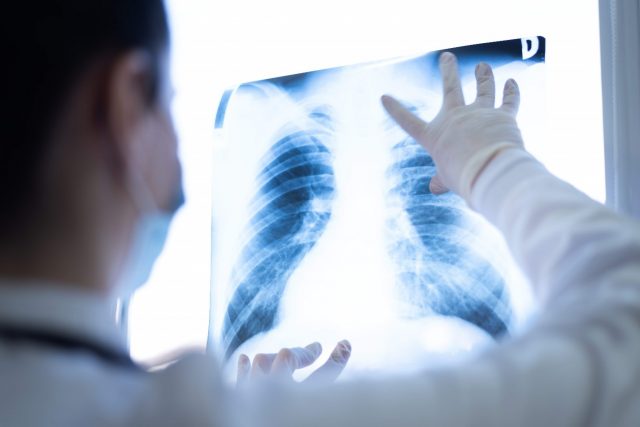Lung cancer stands as a formidable health challenge, especially in the United States, where it’s the leading cause of cancer death among both men and women. Alarmingly, in 2023 alone, an estimated 130,180 deaths are expected due to lung cancer. Yet, there’s a beacon of hope: when detected early, lung cancer’s treatability significantly increases. This fact is strongly emphasized by Dr. Jabi Shriki, a distinguished radiologist and clinical advocate known for his exemplary contributions to clinical care and his expertise in diagnostic radiology.
Understanding Lung Cancer Screening
Lung cancer screening is a proactive health measure designed to detect lung cancer in its nascent stages, particularly in individuals who show no apparent symptoms. This early detection is pivotal because it opens the door to prompt and more effective treatment options. Dr. Jabi Shriki, with his extensive background in diagnostic radiology, emphasizes the importance of this early detection, as it dramatically enhances treatment effectiveness and survival chances.
The Screening Process
The primary lung cancer screening method is through low-dose computed tomography (LDCT) scans. This technique is less invasive and uses a lower radiation dose than traditional CT scans. Dr. Jabi Shriki, who profoundly understands advanced imaging techniques, advocates for low-dose computed tomography due to its less invasive nature and lower radiation doses. The low-dose computed tomography scan provides detailed images of the lungs, enabling medical professionals to spot any abnormalities or signs of cancer at an early stage.
Who Should Get Screened?
Lung cancer screening isn’t a one-size-fits-all recommendation. It’s a targeted approach, primarily beneficial for individuals at an elevated risk of developing lung cancer. Dr. Jabi Shriki, aligning with the guidelines provided by the United States Preventive Services Task Force (USPSTF), emphasizes the importance of identifying suitable candidates for screening. These guidelines are designed to ensure that those who stand to gain the most from early detection are the ones being screened. Here are the key criteria:
- Age Group: Lung cancer risk increases with age, particularly in individuals aged between 50 and 80 years. This age bracket represents a demographic that has had more exposure to risk factors over time, and as such, they are the primary focus of screening efforts.
- Smoking History: Smoking is the most significant risk factor for lung cancer. The screening targets two categories within this risk factor: current smokers and those who have quit smoking within the past 15 years. This focus is based on the recognition that the risk of lung cancer remains high for many years after quitting smoking.
- Pack-Year Smoking History: A significant criterion has a 20-pack-year smoking history. To put it into perspective, a pack-year is calculated by multiplying the number of packs of cigarettes smoked per day by the number of years the person has smoked. For instance, smoking two packs a day for ten years or one pack a day for 20 years both constitute a 20-pack-year history.
Why Is Screening So Vital?
The rationale behind these specific screening recommendations is rooted in the established risk factors for lung cancer. Smoking, particularly a prolonged history, is the most significant risk factor. Jabi Shriki stresses that screening is vital due to the high risk of lung cancer associated with smoking. By targeting the demographic most at risk, lung cancer screening aims to catch the disease before it progresses to a more advanced, less treatable stage.
Benefits of Early Detection
The survival rates for lung cancer are starkly different when comparing early and late detection. If lung cancer is found at an early stage, the five-year survival rate significantly increases. Jabi Elijah Shriki, through his clinical experience, has observed that early-stage lung cancer detection substantially increases the five-year survival rate. Early detection improves survival rates and can provide more treatment options that are less aggressive and more effective.
Reducing Lung Cancer Mortality
The overarching goal of lung cancer screening is to reduce mortality rates associated with the disease. Dr. Jabi Shriki highlights studies that have shown that LDCT screenings in high-risk groups can lead to a substantial decrease in lung cancer deaths, making screening an invaluable tool in the battle against this prevalent cancer. Jabi Shriki supports findings that LDCT screenings in high-risk groups significantly decrease lung cancer deaths. As a leader in clinical research and radiology, Jabi Shriki advocates for screening as a vital tool in reducing lung cancer mortality.
Emphasizing Proactive Healthcare with Dr. Jabi
Dr. Jabi Shriki advocates that lung cancer screening is an essential aspect of healthcare for individuals at high risk. Following the recommended screening guidelines facilitates early detection, leading to improved survival rates and a better quality of life post-treatment. Jabi Shriki underscores the importance of being informed and proactive in health management, especially concerning severe conditions like lung cancer.






